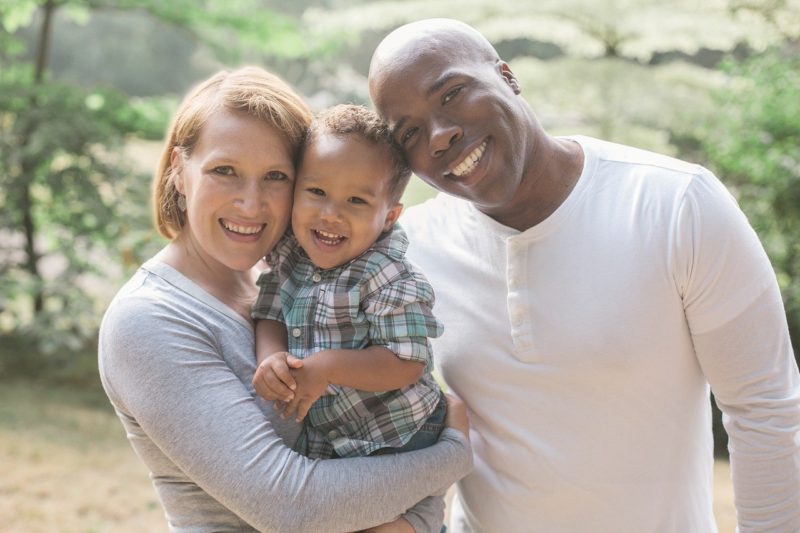Learning German Articles Can Be Easy
If you’re here to learn about German journalism, I’m afraid this isn’t the post for you. Articles are a part of everyday speech that you need to master to reach fluency. In English, there are only three articles: “the” is the definite article, and “a” and “an” are the indefinite ones. But, in German, there are a lot more. Luckily, you can learn German articles easily with the help of this super-badass-epic guide.
German Nouns Have Three Genders and Four Cases
Yes, German has three genders: masculine, feminine, and neuter. This will be a very strange concept for English speakers at first. How can a table be masculine? Or a car neuter? But, German is just like that. To learn German fluently, you have to get used to these genders. The three Genders in German (and not-so-coincidentally the three main definite articles) are “der” (masculine), “die” (feminine), and “das” (neuter).
Since you use articles to describe the definitiveness of the noun, you need to adjust it to fit the noun. That means that every time you’re attaching an article to a noun, you have to take into account the noun’s gender and number. But, gender and number aren’t the only two factors you need to watch out for.
German relies very heavily on cases. There are four cases in total in German: nominative, accusative, dative, and genitive. These cases signal what function a word fulfills in a sentence. If you place a noun in a sentence, it corresponds with the cases like this:
- Nominative: The noun’s the subject.
- Accusative: The noun’s the direct object.
- Dative: The noun’s the indirect object.
- Genitive: The noun’s possessive.
When you’re putting an article in front of a noun, you need to adjust it to fit the gender, number, and case of the noun.

How to Tell the Gender of a Noun in German
Three genders must get very confusing, right? Who can remember all the genders with the vocabulary? Well, by the end of this article, you can. Learning how to tell genders apart in German is very straightforward. And even if you find them difficult, here are a few tricks to help you tell the genders of German nouns apart.
1. Biological Gender
Very often in German, you’ll find that the separation of the three genders is logical. For people, for example, it’s very straightforward. Words describing men are masculine, and women are feminine. If it’s a child, it’s usually neuter. (der Mann (man), der Opa (grandpa, die Mutter (mom), die Frau (woman), das Kind (child), das Mädchen (girl)).
The same is true for occupations. Every occupation is masculine unless you put an “-in” at the end. That shows that it’s a woman in that occupation, and the article changes to feminine. (der Lehrer (teacher), die Lehrerin (female teacher), der Arzt (doctor), die Ärztin (female doctor)).
2. Look at the Ending
You don’t have to learn all the genders with your vocabulary. Most of the time, you can tell what the gender is in German based on the ending of the word. Here are the endings that are (with a few very rare exceptions) parts of the following genders:
DER: -ant/-ent, -ich, -ling- ismus, -ist, -or, -er
- der Student – student
- der Teppich – carpet
- der Schmetterling – butterfly
- der Alkoholismus – alcoholism
- der Tourist – tourist
- der Direktor – director
- der Vater – father
- (except die Butter (butter), das Fenster (window), die Mutter (mother), die Leiter (ladder))
DIE: -e, -heit/keit, -ung, -schaft, -ie, -anz/enz, -ik, -ei, -ion, -ität, -ur
- die Nase – nose
- die Freiheit – freedom
- die Ahnung – idea
- die Wissenschaft – science
- die Fotografie – photography
- die Intelligenz – intelligence
- die Statistik – statistics
- die Bäckerei – bakery
- die Aktion – action
- die Universität – University
- die Natur – nature
DAS: -chen, -lein, -ment, -tum, -um
- das Mädchen – girl
- das Fraulein
- das Dokument – document
- das Eigentum – property
- (except: der Irrtum (mistake), der Reichtum (wealth))
- das Datum – date

3. Gender by Categories
Some categories of words belong to one gender. These are very quick to learn and easy to follow:
DER:
- days of the week, names of months, seasons, times of the day (der Montag (Monday), der Oktober (October), der Frühling (spring), der Morgen (morning))
- weather (der Regen (rain), der Schnee (snow), der Wind (wind))
- directions (der Süden (south), der Norden (north), Osten (east), Westen (west))
- alcohol (der Wein, der Cognac (cognac), exception: das Bier (beer))
- car brands (der Audi, der Fiat, der Ford)
DIE:
- trees, fruits, and flowers (die Eiche (oak), die Birne (pear), die Rose (rose), exceptions: der Baum (tree), der Apfel (apple), der Pfirsich (peach))
- names of ships (die Titanic, die Queen Elizabeth)
- numbers used as nouns (die Zwei, die Hundert, die Million)
DAS:
- colors (das Blau (blue), das Rot (red), das Weiß (white))
- nouns that originate from verbs (das Essen (eating), Lernen (learning), Reisen (traveling))

German Definite Articles
In English, the definite article is “the”. In German, they are variations if “der”, “die”, and “das”. If a noun is plural, the gender doesn’t matter, it will always be a variation of “die”. This chart contains every variation of German definite articles you can use.
German Definite Articles Chart
|
Singular |
|
Plural |
|||
|
Masculine |
Feminine |
Neuter |
|
All Genders |
|
| Nominative |
der (the) |
die (the) |
das (the) |
|
die (the) |
| Accusative |
den |
die |
das |
|
die |
| Dative |
dem |
der |
dem |
|
den |
| Genitive |
des |
der |
des |
|
der |
German Indefinite Articles
You use indefinite articles when you’re not sure which noun you’re talking about. The English equivalent is “a” and “an”. In German, the indefinite article is “ein”. But, just like definite articles, you need to conjugate “ein” to fit the noun you’re talking about. Naturally, there is no plural indefinite article, just like in English. Here are all the singular versions of “ein” you need to know, in all four cases.
German Indefinite Articles Chart
|
Singular |
|
Plural |
|||
|
Masc. |
Fem. |
Neut. |
|
All Genders |
|
| Nominative |
ein (a/an) |
eine (a/an) |
ein (a/an) |
|
— |
| Accusative |
einen |
eine |
ein |
|
— |
| Dative |
einem |
einer |
einem |
|
— |
| Genitive |
eines |
einer |
eines |
|
— |
How to Learn German Definite and Indefinite Articles
Looking at this chart can be overwhelming. Those are a lot of variations to keep in mind, not to mention getting the gender of the noun right in the first place. But, for one we believe in you. We believe you can master all definite and indefinite articles in German. So, to help you to fluency a little bit, here are some useful tricks you can do to make learning this lesson a little easier:
- Learn the noun and its gender at the same time: Remembering which noun belongs to which gender can be hard. So, if you learn them at the same time, recalling them will be much easier. For example, try to learn the word for dog “der Hund”, not just “Hund”.
- Use them often: The best way to learn German articles is by practicing. The more you see them, and more importantly, use them, the easier it will be over time. Try to come up with practice sentences to get used to the different variations.
- It’s OK to make mistakes: Mastering German articles takes time. While you can understand the concept quickly, putting it into practice is a different matter altogether. Give yourself a chance to make mistakes. Using the wrong gender or wrong case for a word is not the end of the world.
Master German Articles Through Use
You can learn German articles easily by using them with the most common German words. The phrases and expressions real German locals use is the true road to fluency. And if you want to unlock this list of the most useful vocabulary, all you need to do is download OptiLingo.
OptiLingo is the app that offers you more. It’s not just an extremely convenient vocabulary list. It’s also a way to become fluent in German. This app makes you speak the language and builds your German confidence. When the time comes to speak to locals, you’ll talk to them fluently with the help of OptiLingo.








